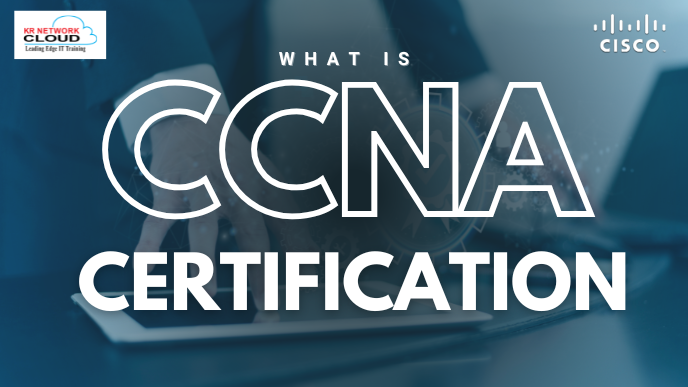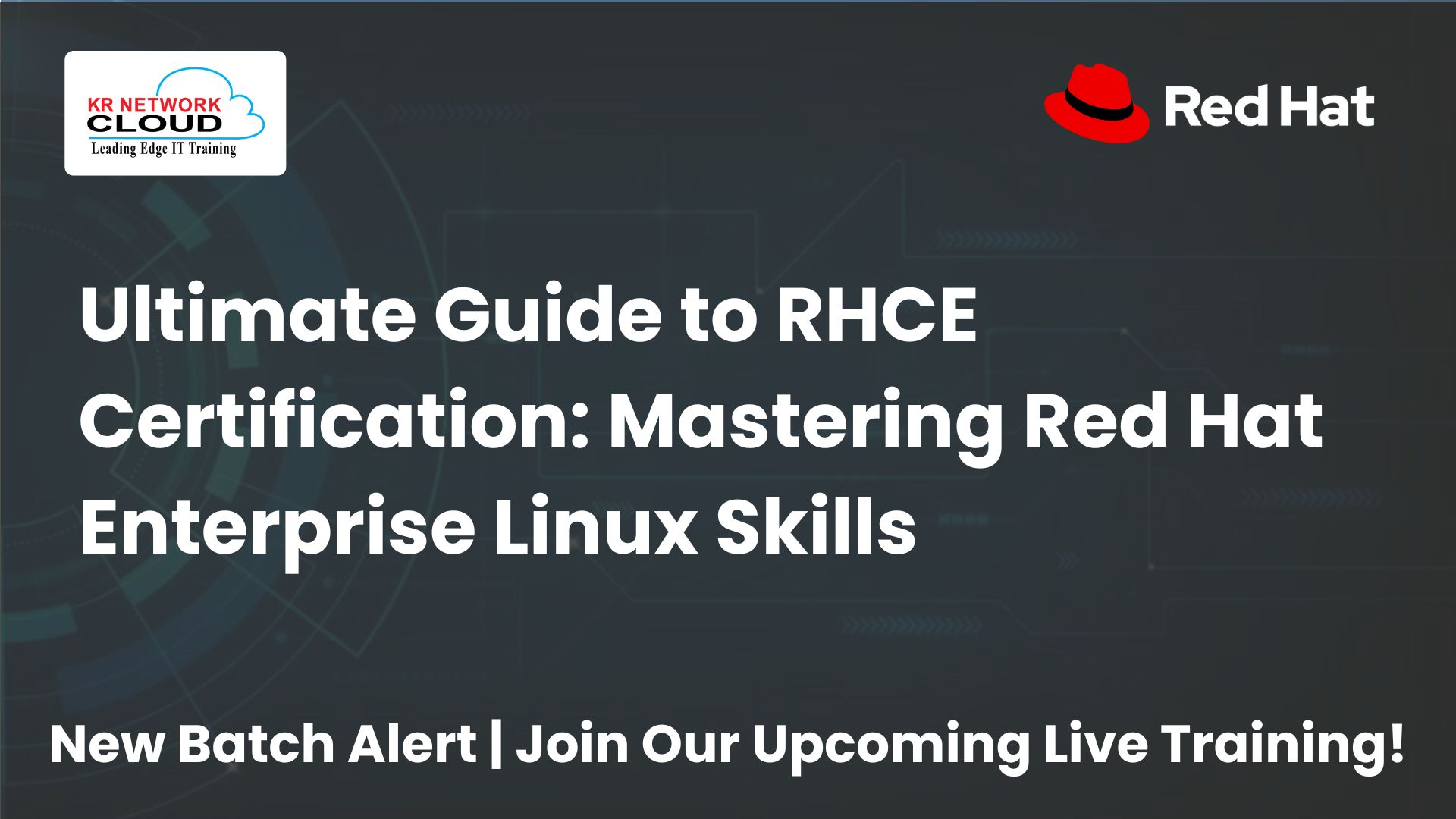Red Hat OpenShift Virtualization Course: Deploy and Manage Cloud-Based Virtual Machines

- KR NETWORK CLOUD
- July 7, 2025
In today’s rapidly evolving IT landscape, virtualization remains a cornerstone for optimizing infrastructure and enabling scalable, flexible, and cost-efficient solutions. Red Hat OpenShift Virtualization, a powerful feature of Red Hat OpenShift, allows organizations to seamlessly integrate virtual machines (VMs) with containerized workloads on a unified, cloud-native platform. By leveraging OpenShift Virtualization, IT professionals can deploy, manage, and scale VMs alongside containers, streamlining operations and preparing for future cloud-native and AI-driven initiatives. Managing Virtual Machines with Red Hat OpenShift Virtualization, to explore its structure, benefits, and how it equips professionals to handle cloud-based virtual machines effectively. Additionally, we’ll address frequently asked questions (FAQs) to clarify common queries about it.
What is Red Hat OpenShift Virtualization?
Red Hat OpenShift Virtualization is a feature of Red Hat OpenShift, built on the open-source KubeVirt project, which enables organizations to run and manage virtual machines within a Kubernetes-based environment. Unlike traditional virtualization platforms like VMware or Red Hat Virtualization (RHV), Virtualization integrates VMs into a modern hybrid cloud infrastructure, allowing them to coexist with containers and serverless workloads. This unified approach simplifies management, reduces operational complexity, and supports a gradual transition to cloud-native applications.
The Red Hat OpenShift Virtualization course (DO316) is designed to teach IT professionals the skills needed to create, deploy, and manage VMs using the Red Hat operator. It is particularly valuable for those transitioning from legacy virtualization platforms or seeking to modernize their infrastructure without redesigning existing VM-based workloads.
Why Take the Red Hat OpenShift Virtualization Course?
The DO316 course equips participants with hands-on skills to leverage Virtualization for enterprise-grade virtual machine management. Here’s why this course is essential for IT professionals:
Unified Platform Management: Learn to manage VMs and containers on a single platform, reducing the need for separate tools and simplifying operations.
No Prior Kubernetes Knowledge Required: The course is designed for beginners and does not require prior experience with Kubernetes or containers, making it accessible to virtual machine administrators, platform engineers, and system administrators.
Career Advancement: Completing the course prepares you for the Red Hat Certified Specialist in OpenShift Virtualization (EX316) exam, a valuable credential for professionals in cloud and virtualization roles.
Practical Skills: Gain hands-on experience with tasks like creating VMs, configuring networking, managing storage, and migrating workloads using the Migration Toolkit for Virtualization (MTV).
Future-Proofing: Learn to integrate traditional VM workloads with modern DevOps practices, such as CI/CD pipelines, GitOps, and Ansible automation, positioning your organization for cloud-native and AI-driven transformations.
Course Overview: DO316 – Managing Virtual Machines with Red Hat OpenShift Virtualization
The DO316 course is a comprehensive training program offered by Red Hat, available in formats such as instructor-led, virtual, or self-paced training. It focuses on deploying and managing cloud-based virtual machines using the Red Hat Virtualization operator. The course duration is typically 5 days for instructor-led sessions, with extended access to hands-on labs for practice.
Key Learning Objectives
Participants will master the following skills:
Creating and Managing VMs: Learn to create VMs from installation media, disk images, and templates using the OpenShift Virtualization operator. Manage VM lifecycles, including starting, stopping, and deleting instances.
Resource Management: Control CPU, memory, storage, and networking resources for VMs using Kubernetes features, ensuring efficient resource allocation and high availability (HA).
Networking Configuration: Configure standard Kubernetes network objects and external access for VMs, including connecting VMs to external data center services like storage and databases.
Migration Strategies: Use the Migration Toolkit for Virtualization to migrate VMs from traditional hypervisors (e.g., VMware, RHV) to OpenShift Virtualization with minimal downtime.
Advanced VM Management: Perform tasks like importing, exporting, snapshotting, cloning, and live migrating VMs. Configure Kubernetes resources for high availability and node maintenance.
Integration with DevOps Practices: Leverage modern DevOps tools like GitOps and Ansible to automate VM management, enhancing operational efficiency.
Course Prerequisites
While the course does not require prior knowledge of Kubernetes or containers, the following skills are recommended:
Basic Linux system administration skills, as covered in Red Hat System Administration I (RH124) and Red Hat System Administration II (RH134), for managing Linux VMs.
Familiarity with Red Hat OpenShift Administration I (DO180) is beneficial but not mandatory.
For advanced Kubernetes and OpenShift skills, consider follow-up courses like Red Hat OpenShift Administration II (DO280) or Red Hat OpenShift Administration III (DO380).
Who Should Take This Course?
The DO316 course is ideal for:
Virtual Machine Administrators: Professionals looking to transition workloads from traditional hypervisors to OpenShift Virtualization.
Platform Engineers and Cloud Administrators: Individuals supporting virtualized and containerized workloads in hybrid cloud environments.
System Administrators: Those managing infrastructure and seeking to integrate VMs with modern cloud-native practices.
DevOps Engineers: Professionals interested in automating VM management using tools like Ansible and GitOps.
Site Reliability Engineers (SREs): Individuals focused on ensuring high availability and scalability of VM workloads.
Benefits of OpenShift Virtualization in the Enterprise
OpenShift Virtualization offers significant advantages for organizations modernizing their IT infrastructure:
Hybrid Cloud Flexibility: Run VMs on-premises or on public clouds like AWS, Microsoft Azure, Google Cloud, or Oracle Cloud Infrastructure, leveraging a consistent hybrid cloud platform.
Cost Efficiency: Consolidate VM and container management on a single platform, reducing operational overhead and avoiding expensive hardware refreshes.
Seamless Migration: The Migration Toolkit for Virtualization simplifies moving VMs from legacy hypervisors like VMware to OpenShift Virtualization, minimizing disruption.
Scalability: Scale VM workloads efficiently using Kubernetes orchestration, with support for up to 6,000 VMs in just 7 hours, as demonstrated by real-world use cases.
Security and Compliance: Benefit from built-in security features, such as microsegmentation via OpenShift’s network policy engine, to protect VM workloads.
AI-Ready Platform: Position your infrastructure for AI and machine learning workloads by integrating VMs with Red Hat OpenShift’s AI capabilities, such as virtual large language models (vLLM).
Real-world examples, like Emirates NBD migrating 9,000 VMs to OpenShift Virtualization due to rising costs of legacy virtualization platforms, highlight its enterprise adoption and scalability.
Hands-On Learning with OpenShift Virtualization
The DO316 course emphasizes practical, hands-on labs to reinforce learning. Participants will:
Deploy the OpenShift Virtualization operator from the OperatorHub.
Create VMs using the OpenShift web console or command-line interface (CLI).
Configure storage and disks for VMs, including persistent volume claims (PVCs).
Use cloud-init to automate VM configuration, such as setting credentials and software repositories.
Perform live migrations and snapshots to ensure workload continuity.
Integrate VMs with CI/CD pipelines and DevOps workflows.
The course also includes access to the Red Hat Learning Community, where participants can connect with peers, share experiences, and access additional resources.
Certification Path: Red Hat Certified Specialist in OpenShift Virtualization (EX316)
Upon completing the DO316 course, participants are well-prepared for the Red Hat Certified Specialist in OpenShift Virtualization (EX316) exam. This performance-based exam tests skills in planning, deploying, and managing VMs in a Red Hat OpenShift environment. Passing the exam earns a certification that counts toward the Red Hat Certified Architect (RHCA) credential, enhancing career prospects in cloud and virtualization roles.
Conclusion
The Red Hat OpenShift Virtualization course (DO316) is a critical step for IT professionals looking to master the deployment and management of cloud-based virtual machines in a modern, hybrid cloud environment. By leveraging OpenShift Virtualization, organizations can bridge the gap between traditional virtualization and cloud-native technologies, achieving operational efficiency, scalability, and flexibility. Whether you’re a virtual machine administrator, platform engineer, or DevOps professional, this course equips you with the skills to manage VM workloads effectively, prepare for certification, and position your organization for future innovations like AI and cloud-native development.
For more information, explore Red Hat’s learning resources, watch demos on the Red Hat OpenShift Virtualization learning hub, or join a SkillBuilders session to see Virtualization in action. Start your journey today and ride the wave of modern virtualization with Red Hat OpenShift
Check Out: Click here
FAQs
1. What is the difference between Red Hat OpenShift Virtualization and Red Hat OpenShift Virtualization Engine?
Red Hat OpenShift Virtualization is a feature included in all editions of Red Hat OpenShift, enabling VMs to run alongside containers. The Red Hat OpenShift Virtualization Engine, introduced in January 2025, is a dedicated edition focused exclusively on VM workloads, excluding containerization features for organizations that only need virtualization.
2. Do I need Kubernetes experience to take the DO316 course?
No, the DO316 course does not require prior Kubernetes or container knowledge, making it accessible to virtualization administrators transitioning to OpenShift Virtualization. However, basic Linux system administration skills are recommended.
3. How does OpenShift Virtualization support VM migration?
The Migration Toolkit for Virtualization (MTV) simplifies VM migration by allowing you to connect to existing hypervisors, map source and destination infrastructure, create a migration plan, and execute it with minimal downtime. This is particularly useful for migrating from platforms like VMware or RHV.
4. Can OpenShift Virtualization run Windows and Linux VMs?
Yes, it supports both Windows and Linux VMs, allowing them to run side by side. It includes unlimited Red Hat Enterprise Linux (RHEL) subscriptions for Linux VMs.
5. What are the hardware requirements for OpenShift Virtualization?
OpenShift Virtualization requires bare-metal cluster nodes for optimal performance. It leverages the KVM hypervisor and runs on standard x86 hardware or supported cloud platforms like AWS bare-metal instances.
6. How does OpenShift Virtualization integrate with DevOps practices?
It supports DevOps practices by allowing VMs to be managed using CI/CD pipelines, GitOps, and Ansible automation. This enables faster deployment and management of VM-based applications alongside cloud-native workloads.
7. Is OpenShift Virtualization suitable for AI workloads?
Yes, it integrates with Red Hat OpenShift’s AI capabilities, such as virtual large language models (vLLM), making it a foundation for AI-ready infrastructure.







